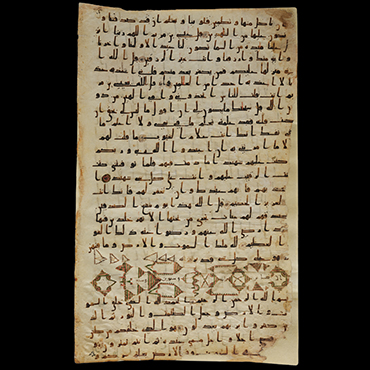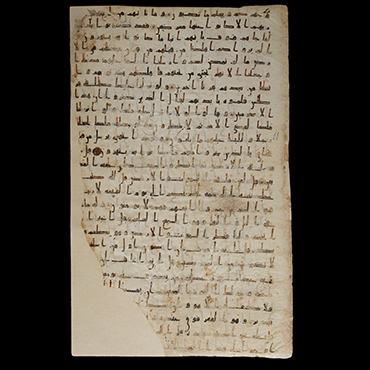The library of the Muslim Board of Uzbekistan in Tashkent was established in AH 1361/1943 CE. Between AH 1361–89 /1943–70 CE, the renowned literary critic Nodirkhan Alouddinov served as director, during which time the library’s collection expanded significantly, particularly through public donations. In AH 1440/2019 CE, restoration and conservation laboratories were established to preserve these valuable holdings. The collection has continued to grow, notably with the generous contribution of Mufti Eshan Bobokhan ibn Abdulmajidkhan, who donated more than a thousand handwritten manuscripts. Today, the library holds 3,065 manuscripts, 9,216 lithographs, and 9,511 printed books. Among its most important manuscripts are a rare mushaf copied by order of Caliph ‘Uthman from the 1st century AH/7th century CE, a 7th-century AH/13th-century CE copy of Abu al-Qasim Zamakhshari’s Kashshaf, a copy of Qazi Shihabuddin Daulatabadi’s Bahr-i Mawwaj, and fragments from the 2nd AH/8th CE “Katta Langar Qur’an.”

Folios from the “Katta Langar Qur’an” (5:113–6:19)
This copy of the Holy Qur’an originally comprised over 200 leaves, of which fewer than 100 survive today. The twelve pages in the collection of the Muslim Board contain chapters 4 to 6. At one time attributed to ‘Uthman bin ‘Affan, the manuscript is now dated to the 2nd century AH/8th century CE, and a recent analysis of the number and composition of the verses, the formation of certain letters, and the use of certain spellings, suggest an origin in the Basra region of Iraq. There are also various theories regarding how the manuscript arrived in the village of Katta Langar, Uzbekistan, where it was discovered in the early 14th century AH/20th century CE.
Putting aside these scholarly debates, the manuscript bears many traces of its peregrinations and history of use. Perhaps in the late 2nd to 3rd centuries AH/early 9th century CE, dotted circles or triangles were added at the end of each verse, and black circles were inserted for gatherings of ten verses. Various diacritical marks were appended to facilitate the recitation or teaching of the text, and in some places chapter names and verse numbers were written in the spaces separating the chapters. Illuminations, as seen on folio 10b, were occasionally included as well.
Arabia or Iraq, late Hijazi script
2nd century AH/8th century CE
Brown, red, and green ink on parchment (possibly deer skin), h. 53 × w. 33 cm
Muslim Board of Uzbekistan, 40-A

